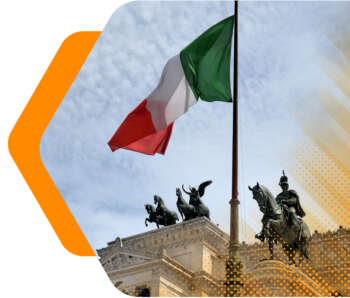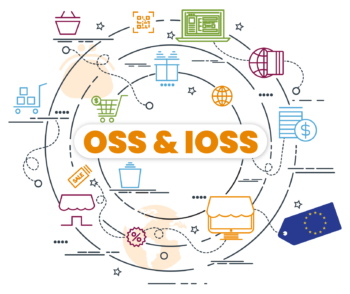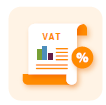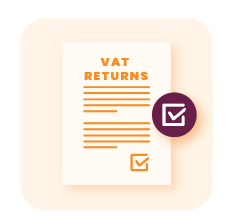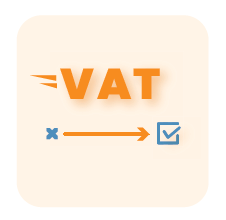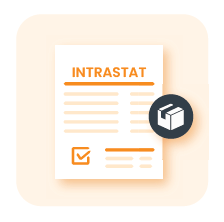B2C Services and E-Commerce in Italy
From 1 July 2021, the EU initiated the “One Stop Shop” (OSS) scheme, which replaced the previous MOSS scheme. This was designed to streamline the registration and VAT reporting processes for foreign e-commerce vendors dealing in goods and services.
Italian rules concerning the place of supply for services align with Articles 43-59b of the EU VAT Directive, ensuring consistency across the European Union. Essentially, for VAT to be applied in Italy, Italy must be the designated place of supply.
Read all about E-Commerce in Italy and supply of services in our comprehensive guide below.
Selling in Italy?
The e-commerce VAT regulations underwent significant changes, replacing the distance sales scheme effective until June 30, 2021:
- The prior distance selling threshold for intra-EU online sales was abolished. Instead, a consolidated annual threshold of €10,000 was introduced for all EU nations. This limit pertains to the aggregate cross-border sales made by a company throughout the EU. Consequently, companies engaged in B2C sales from Italy to other EU nations (and vice versa) that surpass this threshold will be governed by these updated regulations.
- To alleviate the administrative strain on businesses from having to register in each EU nation, the EU introduced a new One-Stop-Shop (OSS) system. o Vendors who opt for the OSS registration will report and remit VAT for cross-border transactions in the destination country of the consumer. o The OSS framework encompasses the distance sales of items dispatched from one EU nation to consumers in another, as well as the provision of VAT-free services to private clients in the EU state where the service is consumed.
- The Import One Stop Shop (IOSS) is designed for B2C sales of products valued at under €150 imported from non-EU countries.
Before July 1, 2021, the distance sale rules applied to the sale of goods by a firm situated in one EU state to non-taxable entities in another. Under this regime, the VAT was applied based on where the goods were when the shipment concluded, but only if the seller’s yearly turnover surpassed the set distance sales threshold (which was €35,000 for Italy).
In essence, suppliers from other EU countries weren’t mandated to register for VAT in Italy for distance sales if their total sales to Italy remained below this threshold. Such sales were taxed in the origin country. Conversely, an Italian supplier, if surpassing the threshold set by the destination country, had to register and remit VAT in that destination country, rather than in Italy.
B2C Sales of Services
Italian rules concerning the place of supply for services align with Articles 43-59b of the EU VAT Directive, ensuring consistency across the European Union. Essentially, for VAT to be applied in Italy, Italy must be the designated place of supply.
The regulations governing the place of supply for services in Italy can be found under Article 7 of the Italian VAT Law. It differentiates between B2B (Business-to-Business) and B2C (Business-to-Consumer) service provisions, especially when the services aren’t tied to additional taxable transactions.
According to the Italian VAT Law, a service supply is considered taxable in Italy if:
- It is a B2B provision made to taxable entities based in Italy.
- It is a B2B provision to a fixed establishment located in Italy.
- It is a B2C transaction provided to end-users by entities taxable for VAT in Italy or through the provider’s established location in Italy.
Electronically supplied services are typically those delivered via the internet or electronic networks, which fundamentally require minimal human intervention. These services are highly reliant on information technology and include:
- Website provision
- Web-hosting services
- Software distribution
- Database access
- Downloading of apps or tunes
- Participation in online games
- Remote learning
- Lodging services provided by non-resident entities
- Entry to events related to culture, art, sports, science, education, and entertainment, as well as to trade fairs and exhibitions.
General principle: The location of the tax-exempt recipient, be it their established place or permanent residence (whether within or outside the EU), typically determines where digital services are supplied.
According to the European Council’s Implementing Regulations for determining the place of supply for digital services:
- If a service necessitates the beneficiaries to be physically present at a specific spot to avail it, that location is deemed the place of supply. However, if the service is provided on modes of transportation like ships, airplanes, or trains carrying passengers within the EU, the country of departure is the place of supply.
- For services delivered through a fixed landline, the installation location is considered the place of supply.
- In cases where services use mobile networks, the country code of the SIM card determines the supply location.
- If services need a viewing card or a device like a decoder and don’t use a landline, the supply location is where the device is situated. If this location is unknown, it’s where the viewing card is dispatched for usage.
For other scenarios, to pinpoint the location of the customer’s office registration, permanent residence, or regular domicile, suppliers should primarily rely on two consistent pieces of evidence, such as:
- Customer’s billing address.
- The IP address being used
- Bank account location utilized for the payment.
- Any other pertinent commercial information.
Last Updated: 11/09/2023
Disclaimer
The information provided by Global VAT Compliance B.V. on this webpage is intended for general informational purposes only. Global VAT Compliance B.V. is not responsible for the accuracy of the information on these pages, and cannot be held liable for claims or losses deriving from the use of this information. If you wish to receive VAT related information please contact our experts at support@gvc.tax

